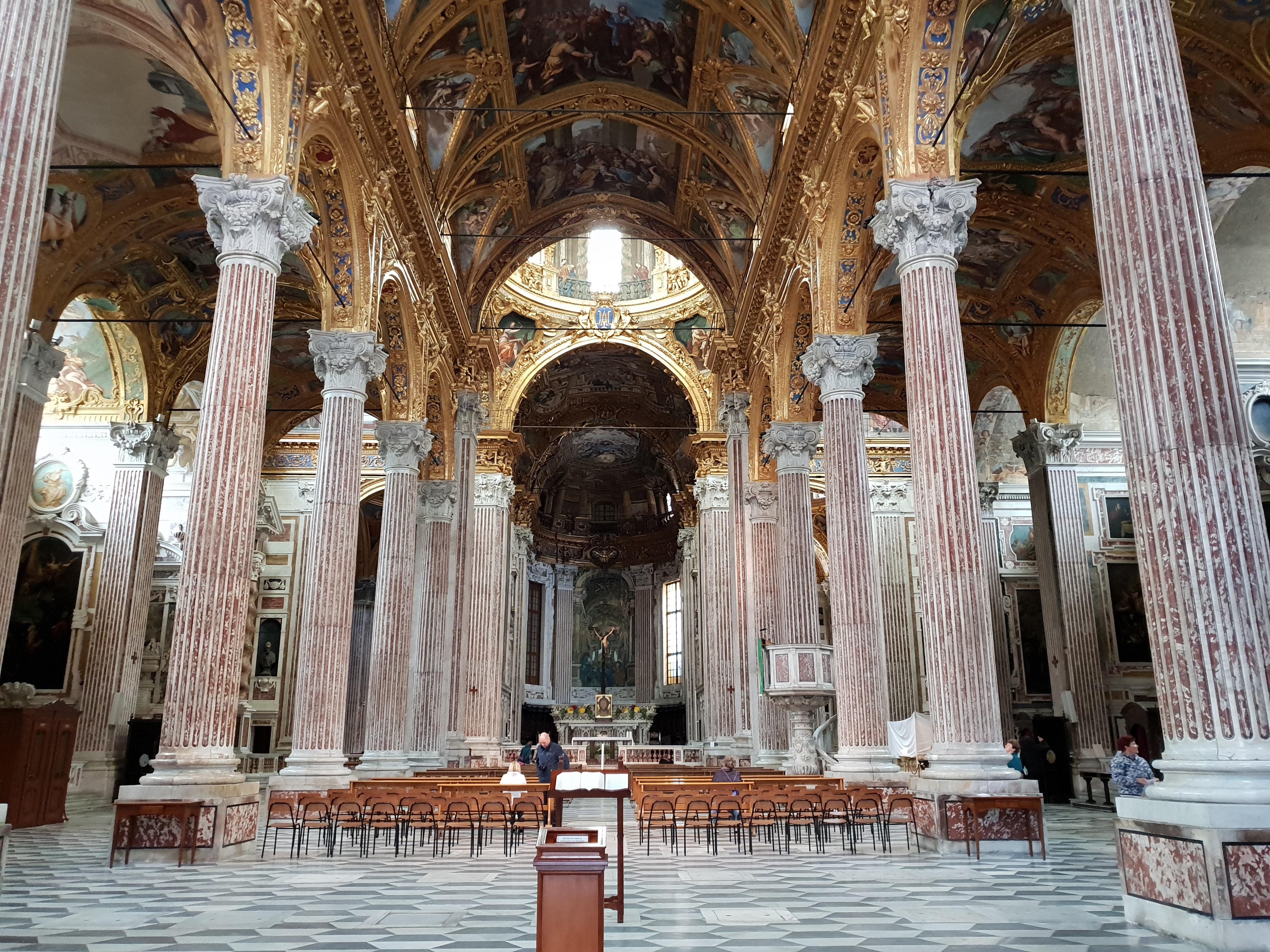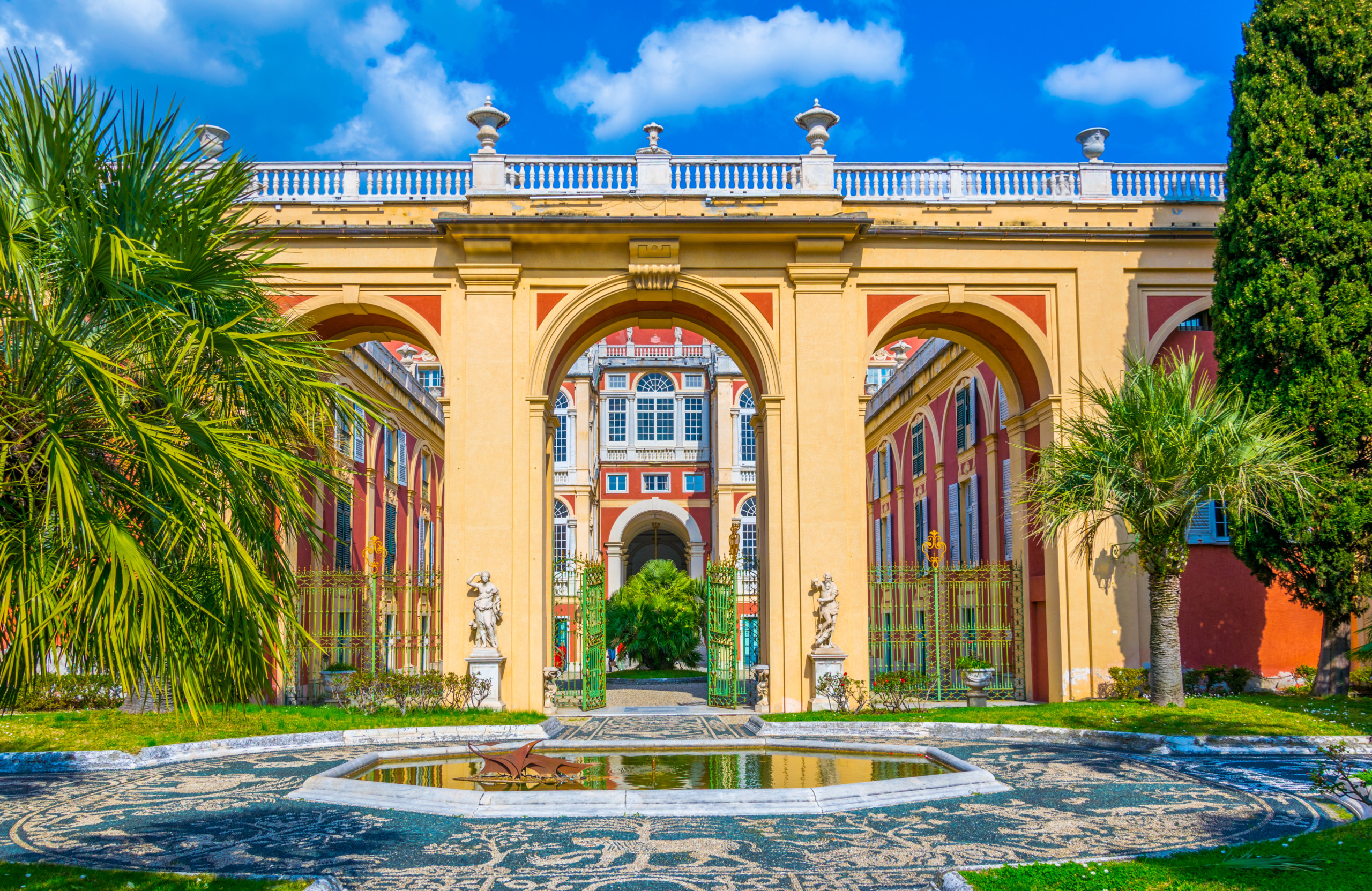A terrible moment — August 14, 2018 — has led to a period of rediscovery for the city of Genoa. On that day, a huge autostrada bridge above the city center collapsed.
The government of Italy immediately took on the task of constructing a new bridge, and on August 2, 2020, the bridge — newly renamed San Giorgio Bridge — reopened to much fanfare. It provided a testament to the Italian government’s ability to work together to overcome the history of neglect that plagues parts of the country’s infrastructure. Renzo Piano, one of Italy’s foremost architects, designed the new structure. The .6-mile-long bridge, part of the A10 Autostrada, links Milan to the Ligurian Coast of the peninsula.
Although the basis for this increased interest in the city began in tragedy, Genoa has always been a remarkable place to add to anyone’s travel plans when visiting Italy.
Consider these reasons you should visit this gorgeous, historic city.
Piazza de Ferrari
This piazza rests at the heart of Genoa, the intersection of many of the city’s major boulevards. Surrounding the piazza stand numerous beautiful buildings and a huge central fountain. Also, here you will find the Teatro Carlo Felice, one of Italy’s newest opera houses. Widely acclaimed for its acoustics and level of technology, audiences will enjoy watching a performance in this grand place. Art Nouveau buildings line the Via XX Settembre and some of the side streets. Cafes abound and visitors will find the city life active, engaging, and memorable.
Cathedral of Santissima Annunziata
Not far from this Piazza rests the Basilica della Santissima Annunziata del Vastatoa. This incredible structure reflects numerous architectural styles, from Romanesque, Gothic, and Renaissance, a result of the many additions made in the 12th, 14th, and 16th Centuries. This imposing church also holds some hidden surprises. I have always found myself captivated by the Chapel of St. John the Baptist where the ashes of the saint are interred along with the platter on which, some believe, the head of the saint was presented to Salome. This breathtaking chapel makes a visit even more memorable.
Palazzo Reale on the Via Balbi
In this large, yet walkable city, one of my favorite areas is the Via Balbi and the Palazzo Reale. The boulevard fronts one of the most beautiful courtyard gardens in Italy at the Palazzo dell’Universita’. If you cross this wide boulevard, you will come to the Palazzo Reale, home to a stunning collection of art. The Palazzo’s interior is truly sumptuous, with expansive staircases, fascinating frescoes, and interior design.
If you would like to take a break away from the city center, consider this short list of recommended places to visit. We recommend a rental car or the hire of a private car and driver.
Santa Margherita Ligure
An easy drive of about an hour brings you to the exit off the E80 Autostrada. During the drive along the autostrada, the highway passes through numerous tunnels, but between them I always enjoy the enticing glimpses of the Liguria sea.
Once I exit the Autostrada, I enjoy the short drive along the coast to the center of the village. Be prepared to walk up to fifteen minutes to get to the center of the village — worth every step. First, I stop at Palazzo Durazzo. Its hilltop position makes for a good early climb up a very steep stairway. The views from the promenade at the front of this villa take my breath. When I return to the village, I always enjoy strolling the narrow streets, perhaps stopping in a waterfront café for a light lunch. I find this village a lovely place to relax. When ready, return to your car and drive twenty minutes further south to a place the world has come to associate with wealth and sumptuous beauty: Portofino.
Portofino
The most well-known of the Ligurian coast villages, certainly until you arrive at the Cinque Terre further south, I have always thought of Portofino as a jewel. The curved harbor creates the focal point of the village. Everything from dinghies to multi -million-dollar yachts rest at anchor. I always start my visit to this place by enjoying a walk along the steep pathway to the Abbey of San Fruttuoso of Capodimonte. Stunning views await at the Abbey, a reward worth the walk.
Pastel-colored cafes, restaurants, and small shops line the road that winds around the perimeter of the harbor. As I often stroll along the waterfront, I try to imagine life in this tiny place when it was a small group of fisherman’s huts. Today, this place is expensive; yet, as I often explain to guests on one of our small group tours, “How often will you be able to enjoy a cappuccino in Portofino?”
Boccadasse
Closer to Genoa, you will find Boccadasse, a relatively small group of buildings, once separate from the city. Easily reached by city bus, this neighborhood has now become a part of Genoa. Although you won’t find any large beache, on the weekends, Genovese crowd this tiny area to enjoy the sun and sense of ‘getaway.” The multi-colored facades of the buildings and the evidence of the remaining fisherman along the beach add to the feeling that you are ‘at the shore,’ rather than so close to the city center.
Though Genoa suffered through a tragedy, the city has moved swiftly to memorialize those lost in the bridge collapse. The residents, and the government of Italy, have worked hard to encourage visitors to return for a visit to the city, including a drive on the strikingly beautiful new bridge. Genoa has an incredible history, phenomenal sites to visit, remarkable restaurants and, within easy reach, some of the most beautiful small villages on the Ligurian Coast.
Enjoy!







